talkingfashion » history of fashion jewelry
-
Faith & Fashion
Faith & Fashion by Morgan Watkins
Although styling looks with religious jewelry is not a new concept, it seems to be having a major moment in the fashion universe. The latest Heavenly Bodies Met Gala and exhibit resulted in looks so exquisitely sultry, it should be a sin. But what are the true origins of Catholic inspired fashions, Christian cross necklaces and other religious dressings that have been commodified for the general public to wear? Keep reading to learn more about religious jewelry.The Cross

Cross necklaces have been a symbol of faith for followers of Christ since the times of the Roman Empire in the 4th century. Not only does this powerful accessory show Christian, or Catholic, faith, but it also serves as a form of spiritual protection for the wearer. These necklaces can also be gifted to individuals at baptisms and confirmation ceremonies, with simple crosses or embellished ones showcasing diamonds and even birthstones. For decades, the spiritual significance associated with cross jewelry has faded as icons in pop culture, like Madonna and Billy Idol, have turned the spiritual items into fashion fads. Cross necklaces have also been worn in political contexts to criticize popular religious beliefs that work towards shaming women for their individuality and sexuality. But no matter the rhyme or reason for wearing necklaces with hanging crosses, a lot can be said about their staying power in the fashion world. Paired beautifully with delicate lace, cross necklaces can create a look so stunning, you’ll be in heaven.
Prayer Jewelry

(Image from https://www.malaprayer.com/blogs/news/everything-you-need-to-know-about-mala-pray er-necklaces)
Prayer jewelry quite possibly holds even more religious significance than cross necklaces, and have not been brought into mainstream fashion as a superficial accessory. Various religions hold onto beaded necklaces representing various purposes. Islamic prayer beads typically have 100 beads, while those of the Baha’i religion have 95 or 19, with a grouping of 5 beads hanging below. Sikhs, Hindus and Buddhists wear what are known as mala prayer necklaces, which are worn not only around the neck, but also around turbans and wrists. Malas typically have 108 beads made of natural materials like sandalwood and lava stone, and are said to have originated in India during the 8th century. Mala became popular in countries like China, Korea and Japan before hitting Europe during the late Middle Ages in the shape of the Catholic rosary. Roman Catholics, like most other religions utilizing prayer beads, used rosaries to count prayers and other acts of worship, as well as provide security. These necklaces characteristically feature 59 beads, but before beads came around, a popular way of keeping track of prayers was by tying knots or fastening berries, pebbles and/or bone discs onto necklaces.
Fita do Senhor do Bonfim

(Image from http://www.sensationalcolor.com/color-meaning/color-meaning-symbolism-psychology/b ahia-bands-brazilian-wish-bracelet#.W7-v8WhKhaQ)
Similar to prayer necklaces, Fita do Senhor do Bonfim, or ribbon of Bonfim, are essentially wish ribbons. Dating back to 1809, the ribbons, also known as Bahia bands, were originated by the African religion of Cadomblé. They were initially called “measure of Bonfim” because their size equated the length of the arm of the Jesus Christ statue perched upon the main altar of the Bonfim Church in Salvador, Brazil. Measuring 47 centimeters long, Bahia bands are commonly worn around the left wrist, on the ankle, around hats and necks, and are even tied to the gate of the Bonfim Church. When tied in three knots, a wish can be made. Customarily, the ribbon is gifted to an individual and is tied to the receiver’s wrist by the gifter. The band must fall off the body naturally over time, or the wish will not come true. These accessories also represent good faith, and the color of the band symbolizes specific orixás, or divine forces of nature. For instance, the color red represents passion and strength, yellow equates to success and intelligence, and orange signifies courage, energy and joy.

Accessories like the ones mentioned above can have deep meaning for a variety of people and cultures around the world.While appreciating the artistic and aesthetic elements of religious styles in fashion isn’t a sin, it is crucial that everyone, from runway connoisseurs and everyday individuals, know and respect the rich history behind the symbols they wear.
References
Coscarelli, Alyssa. “Is It Okay To Wear Religious Symbols For Fashion?” Refinery29, 4 May 2018, https://www.refinery29.com/cross-jewelry-trend.
“Everything You Need to Know about Mala Prayer Necklaces.” Mala Prayer, https://www.malaprayer.com/blogs/news/everything-you-need-to-know-about-mal
A-prayer-necklaces.
Ribeiro, Patricia. “A Traveler’s Guide to Bonfim Church.” Trip Savvy, 30 June 2017, https://www.tripsavvy.com/bonfim-church-salvador-brazil-1467851.
Smith, Katie. “Bahia Bands: Brazilian Bracelet Color Meaning.” Sensational Color, http://www.sensationalcolor.com/color-meaning/color-meaning-symbolism-psych ology/bahia-bands-brazilian-wish-bracelet#.W7-yEGhKhaS. -
History of the Watch: A Timeless Timekeeping Accessory
The Watch: A Timeless Timekeeping Accessory
By Paige McKirahan
The neverending passage of time is what that we base all of our daily schedules on; from sleep to work to the next fun party, everything runs on the basis of time. But, what is time without a timekeeping device? Without them, we would never be quite sure if were truly on time, and for chronically late people (like myself), this would create quite a problem. People found this to be increasingly troublesome and started looking for a solution; yes, clocks on the wall tell us all we needed to know, but how would we have this knowledge if we were out and about or a clock wasnt near? This question was answered with the creation of the wristwatch in the early 1800s for the Queen of Naples.
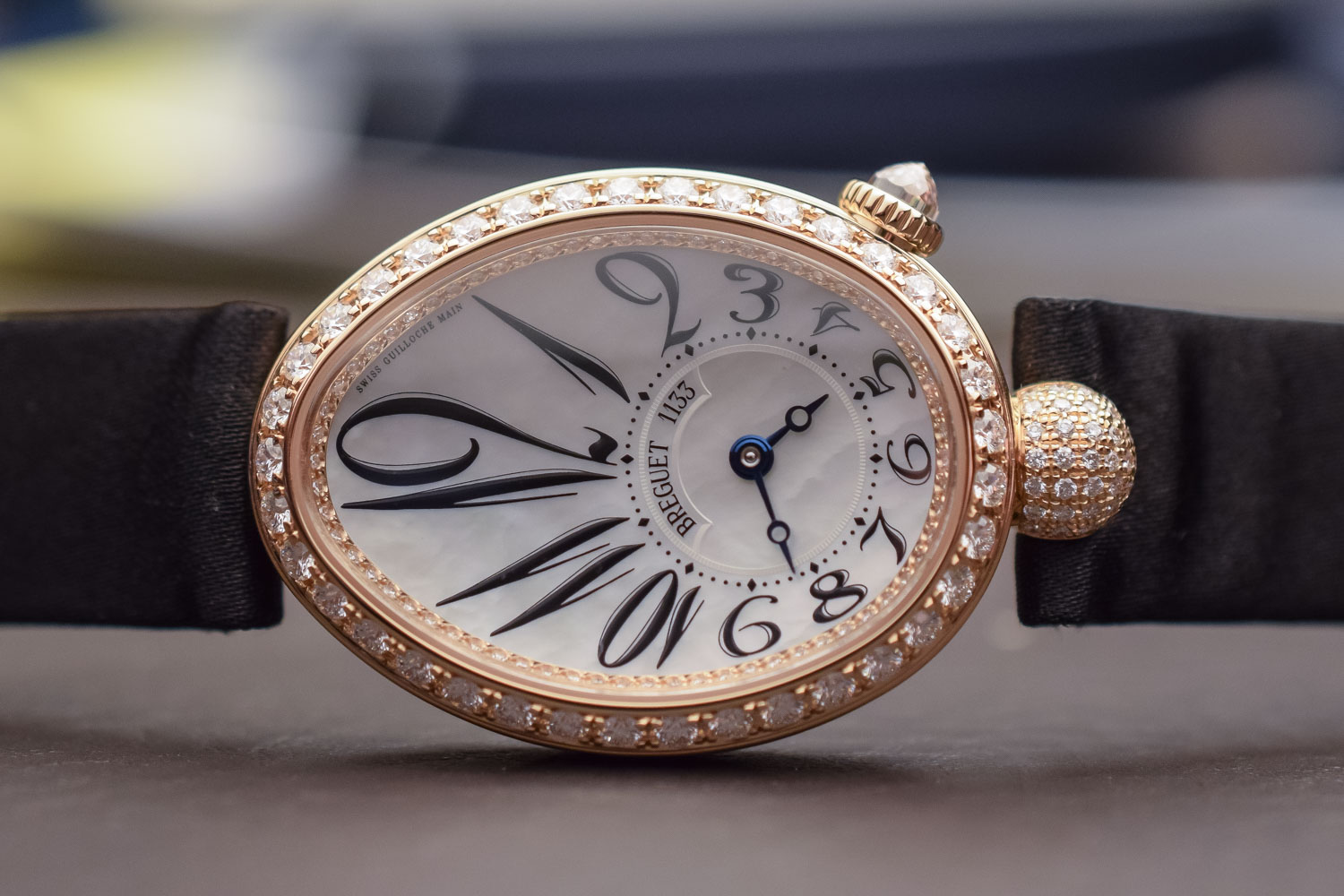
A replica of the first wristwatch
(photo credits to monochromewatches.com)
Despite the fact that arm watches were actually created in the 1570s, they were not worn on the wrist and weren't particularly popular with the public until this updated 17th century design. Arm watches were more so worn by women on account of the fact that they were prone to damage; men wore pocket watches and the first was created in 1574. Wristwatches changed this dynamic on account of the fact that men in the military advocated for the accessory as it allowed them to keep track of time with ease. Alberto Santos-Dumont, a Brazilian aviator, reached out to his friend Louis Cartier to come up with a style that of watch that would allow him to keep both hands on his controls while still being able to properly time flights. Cartier collaborated with watchmaker Edmond Jaeger to develop the Santos wristwatch, which is one of their brands cornerstone pieces.
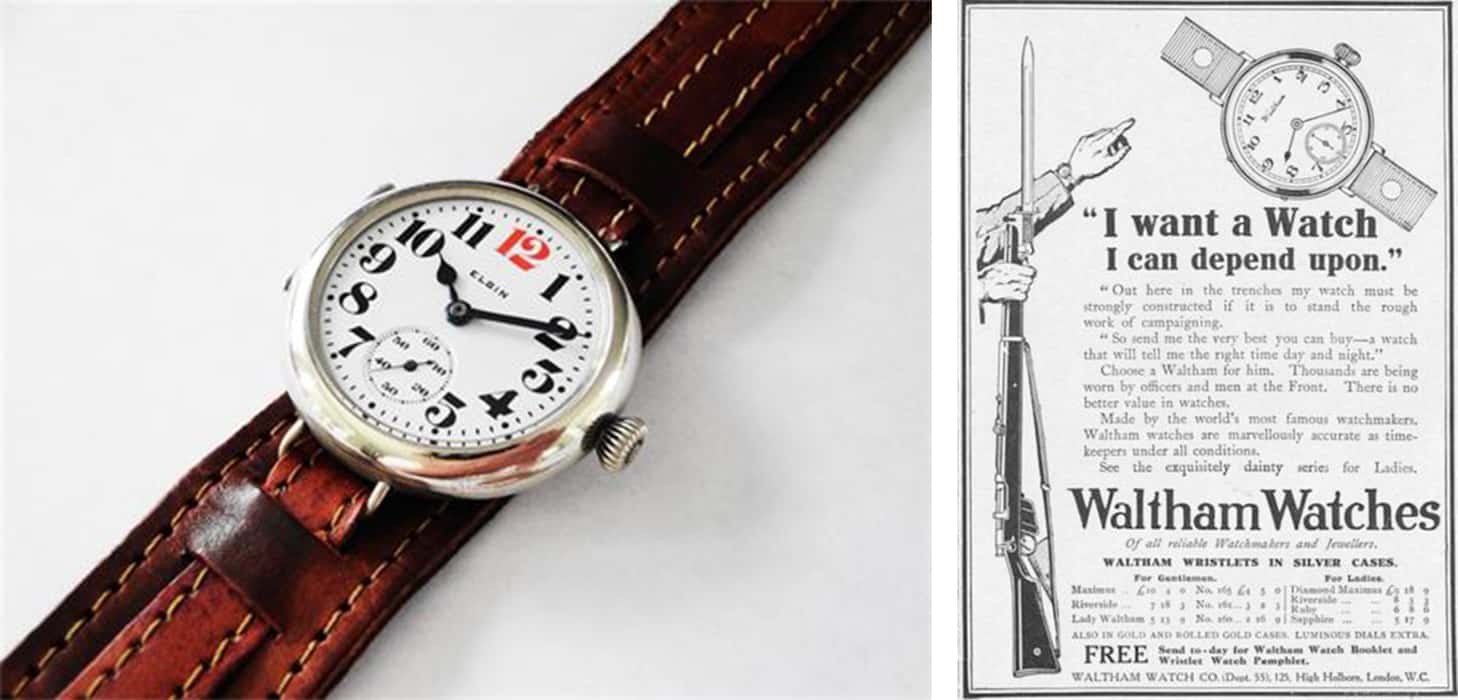
Military watch ad from WWI
(photo credits to wornandwound.com)
As we progressed towards the first World War, the popularization of watches for those in the military grew; the wristwatches they were given were referred to as “trench watches” and they established themselves as part of the Officers Kit for the war front. After this time, this accessory began to truly evolve as industrial advancements allowed for the production of wristwatches with automatic winding. John Harwood, a watch repairer, claimed patents for this ingenuity in 1923 after he was the first who managed to use the kinetic power garnered from the watches' hand movement to changing mechanisms. He then started producing these watches in a factory in Switzerland in 1928, which gave the public a chance to purchase one of his timekeeping pieces that could work for 12 hours on a full charge. In the 1950s, fully electric watches were introduced, with the balance wheel being powered by a solenoid, which is a thin wire trapped around a metallic core that procures electric currents.
This new electric watch allowed for the birth of the quartz watch, which removed all moving parts in mechanical watches; this 1969 invention instead used a battery, allowing them to be more shock absorbent and accurate without constant cleaning or oiling. Quartz watches are still manufactured today, but some luxury Swiss brands choose to create non-quartz options by hand. Today, watches can be made of stainless steel, silver, gold, titanium, carbon fibre, platinum, and aluminum. Some manufacturers even use more high tech silicons and ceramics in experimental design. Aside from regular watches, though, smart watches have made waves in wearable timepieces in the past five years and can be seen on the wrists of millions. Apple, Samsung, and Google have all created their own smart technology, opening the door for other new watches that can be connected to smart devices. Whether you are a fan of the classics or are going all digital, read on to see where your preference falls in the top 5 most iconic watches of all time!
The Cartier Santos
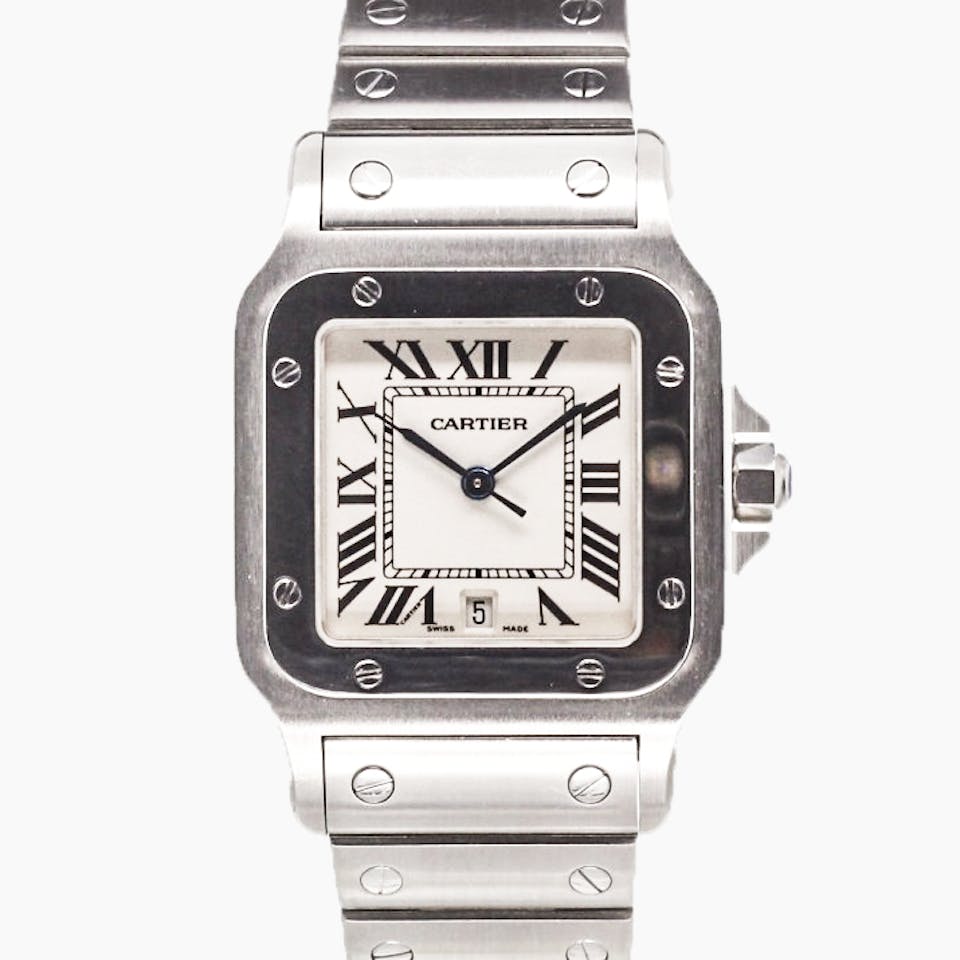
As we learned, this watch was one of the first of its kind and was created to help Alberto Santos keep time while flying his plane. Today, it is an iconic style who’s elegance and history lures in all types of buyers.
Jaeger- LeCoultre Reverso
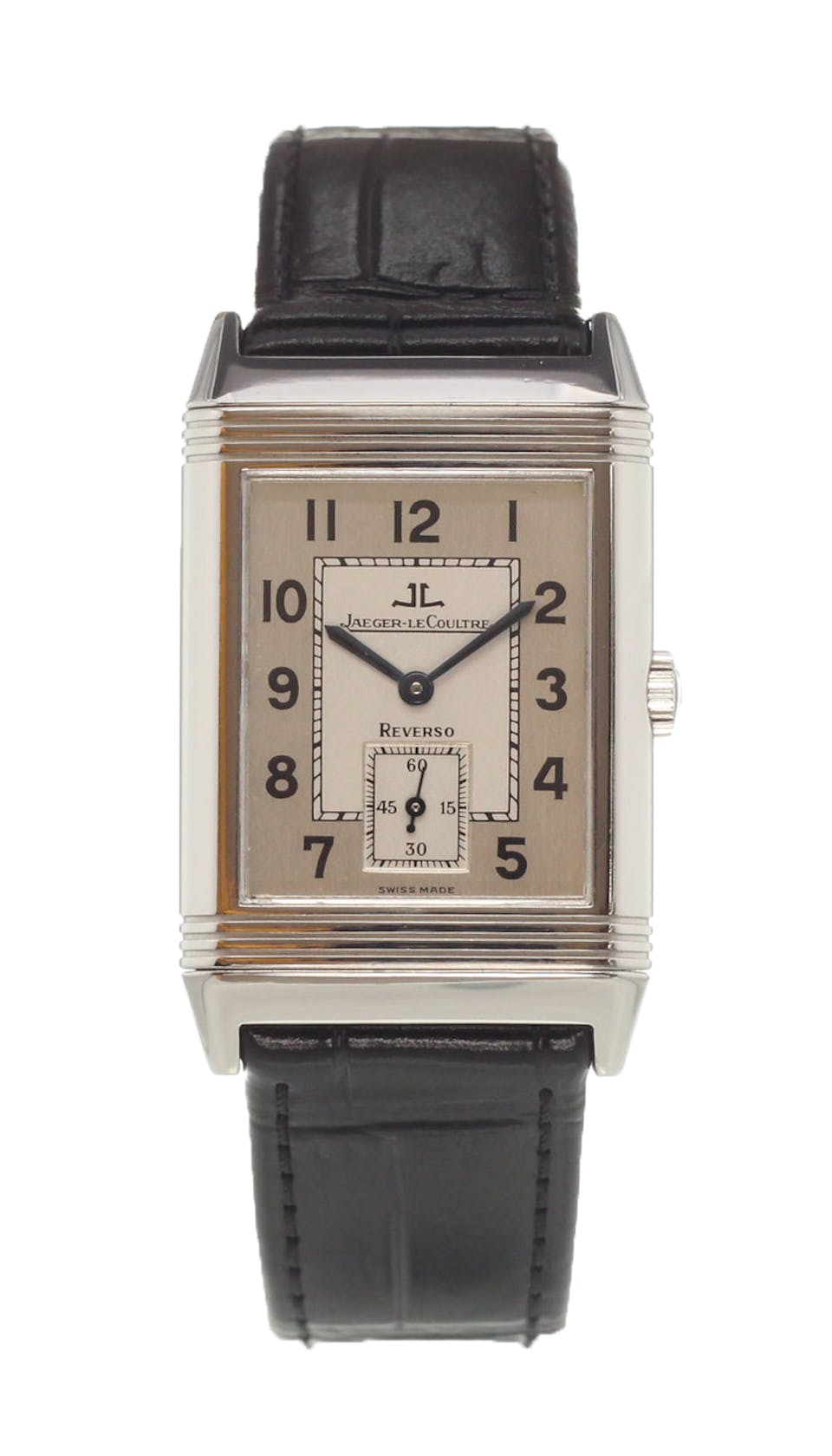
This Art Deco piece made it debut in 1931 as a watch for Britian's elite polo society. It featured a casing that was on a swivel, which ultimately protected the watch from cracks caused by force. Its classic, angular style sets it apart from the rest, appealing to collectors everywhere.
IWC Pilot’s Watch
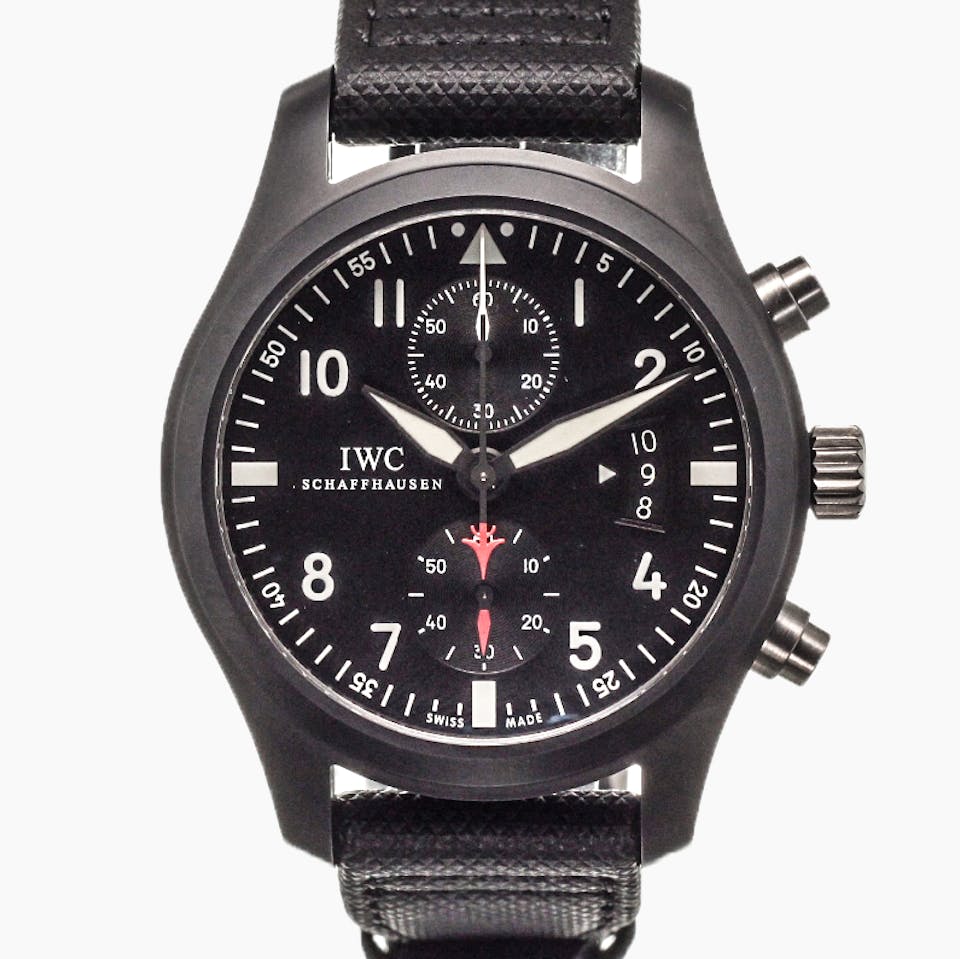
This Special Pilot's watch was the first of its kind at the time of its release by IWC in 1936; it prompted a collection of other military grade watches that captured the praise of the public for decades. This timepieces features a stainless steel waterproof casing that surrounds a softer inner cage, protecting the movement from magnetic fields.
Patek Phillippe Perpetual Calendar Chronograph

This timepiece was one of the first of its kind as it was able to keep track of the date for 200 years without adjustment. Patek released this watch in 1941 and it took the timekeeping community by storm as it was also able to measure small increments of time. Today, it is still widely sought out by collectors and leisure wearers alike.
Rolex Datejust
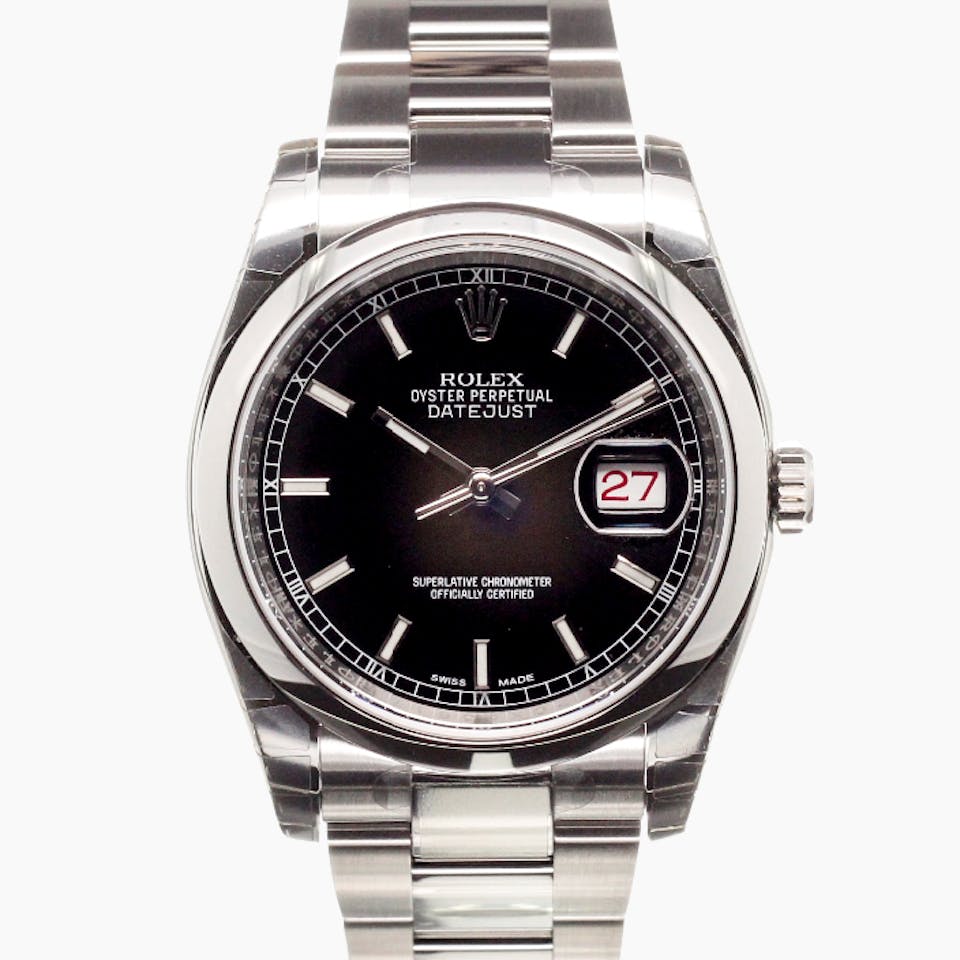
As one of the most iconic watch brands of all time, Rolex released the Datejust in 1945 and it was distinguished by its date indicator. This designs trademark was the Cyclops lense, and its original design has been nearly unchanged. A symbol of strength and intelligence, this timepiece has been worn by the likes of Winston Churchill and Dwight D. Eisenhower.
(all above photo credits to chronext.com)
If you're looking for a way to avoid being fashionably late while still being chic, check out our collection of timekeeping accessories!
-
Metallic’s Glimmering Fashion History
Metallic’s Glimmering Fashion History
By Paige McKirahan
From the eye catching metallic jumpsuits of the ‘70s to the glimmering casings of the latest iPhones, metal motifs have been loved for decades across all art mediums. As we have learned by seeing all of our mother’s fashions cycle through popular revivals, the metallic trend has come in and out of the style again and again. Though there was some metallic glamour seen in the 1930s and 40s, it wasn’t until later in the century that this style truly began to shine. Starting in the 1970s, metal moved into fashion as the disco era was in full swing; in order to shine bright under disco lights, colorful metallic clothing and accessories were essential. ABBA blazed the trail with their shimmery looks and glittering performances, but this journey was stopped short before the end of the following decade when neon in the ‘80s prevailed.

Farrah Fawcett sporting a gold dress in the 1970s
(image credits to pinterest.com)
As grungier, minimalist styles proved themselves to be on trend in the ‘90s, the early 2000s left that minimalism behind and headed towards a shining future. Both silver and gold aesthetics were the “it” styles both on the runway and in the jewelry industry. This boom happened once again in 2013 when heavy metal saturated Ready to Wear collections across the globe from Balmain to Gucci. Every color could be seen with a metallic sheen and this aesthetic was applied to everything from belts to pantsuits.
Once again, we see have this metal obsession come back into the light as these shiny styles dazzled on runway all over the world this past fall. As the trend has evolved, it is considered perfect for spring and summer looks that are fit to sparkle under the sun. But don’t think that these metal hues are just for the warm weather months; implementing darker metallic shades into a fall and winter outfit can elevate any chic cold-weather look. New Years Eve is the best time to shine and if you're looking to emulate the Times Square Ball, check out our collection for some time stopping metallic pieces perfect for any end of year celebration!
-
Designer Spotlight: Sugar Gay Isber
Designer Spotlight: Sugar Gay Isber
By Paige McKirahan
This week, we have decided to spotlight a designer that is not only prominent in our collections, but prominent in jewelry lover's collections over the globe. Gay Isber, affectionately nicknamed Sugar, is a Canadian jewelry designer based out of Austin, Texas. As a seventh generation Texan, she planted her roots in the south with Gay Isber Designs, her namesake jewelry and product design company. As the creative force propelling the business forward, she has been crafting jewelry for over 15 years; she has been featured in national and international media, and has created pieces for everyone from royals to rock stars. She has even been dubbed “a guru of the fashion and jewelry industry” in her home state, which eventually pushed her to receive the Designer of the Year award in 2016. Now that we know of her great successes, let’s learn more about her inspiration, background, and her beautiful creations!

(photo credits to shoplc.com)
Sugar is a self-proclaimed jewelry lover who advocates for conversational pieces that are enjoyed more with every wear. As a creator, she is uninterested in what other designers are producing and focuses more about how her materials inspire her or how she can continue advancing her skills; she feels that she is truly only as good as her last piece.
Gay began her amazing journey by starting off as a painter after graduating with a Master’s Degree in Humanities and Visual Arts. She wanted her paintings to be show stopping, and concluded she would stop art show traffic by creating a bracelet that emulated her artwork’s colorful aesthetic. By the show’s conclusion, she realized that most of the patrons were more interested in her bracelet than her paintings, prompting her to make the transition from art to jewelry. Despite this, she has continued painting as a hobby and many of her jewels look similar to her art.
As a full-time creator, Sugar says that she dreams about jewels and has worked with so many amazing people that make the effort worthwhile. Aside from designing pieces for Michelle Obama, Camilla and Prince Charles, Lady Gaga and Martha Stewart (to name a few), she has also created a line for Harley Davidson and have participated in fundraising events for the company benefiting breast cancer. She participates in a vast amount of charity fundraisers and sells her jewelry at those events, through The Shopping Channel, through her mailing list, and independent retailers. In addition to her career as a designer, she also has been teaching at Austin Community College since 2012 where she offers private or group classes.
Whether it be a custom piece or a simple design, Sugar’s jewelry is eye-catching and commonly features bright colors, beautiful gems, bead work or metallic accents. Looking for some Sugar of your own? We have enough to fill a candy store! Head over to our collection to find some great Gay Isber pieces that are sure to sweeten up this holiday season!
(All biographical information taken from gayisber.com)
-
The Met Museum Presents Jewelry: The Body Transformed
The Met Museum Presents Jewelry: The Body Transformed
By Paige McKirahan
In the wake of The Metropolitan Museum of Art’s most successful fashion related exhibit since its conception (talking about you, Heavenly Bodies Exhibit!), we here at TalkingFashion we have been excited to see what was next for the art-filled attraction based in New York City. Lucky for us, the topic for their new display covers none other than jewelry throughout time; museum patrons will be able to view over 200 pieces from dated 2600 B.C. to the present. The exhibit, which is titled “Jewelry: The Body Transformed”, opened on November 12th and will have a 15-week run in the iconic museum.
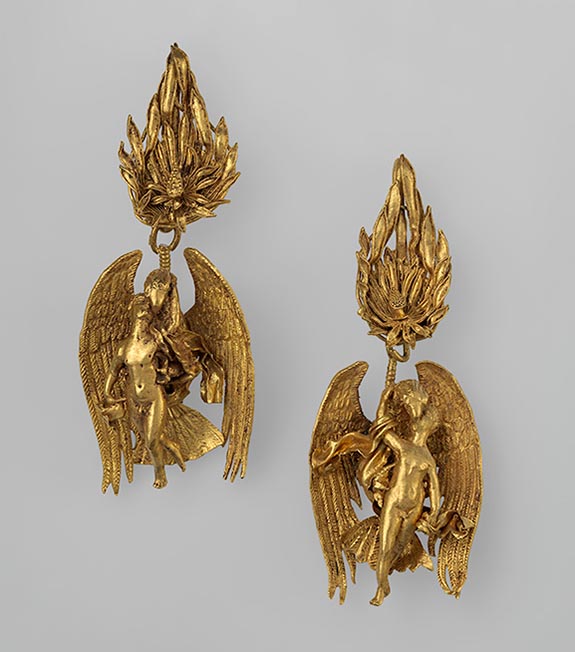
If you are lucky to see the exhibition, you will be faced with an exploration of how “jewelry acts upon and activates the body it adorns” from a historical perspective. The pieces are chiefly taken from the Met collection and many portions of the exhibit pair the jewelry with sculptures, prints, and photographs in order to enhance their story. Jewelry from around the world will be organized into galleries by the part of the body they embellish starting from the top of one’s head and hair; to the nose, lips and ears; neck and chest; and lastly waist, ankles, and feet.

After the exhibition is separated by body part, the remaining galleries are arranged thematically. The Divine Body is focused on early conceptions of jewelry and its previous link to immortality. The Regal Body will look at the use of jewelry as a status symbol. The Transcendent Body moves away from a rank-based evaluation and looks to jewelry’s historical link to the spirit world, where it was said to conjure spirits, appease gods and conjure ancestors. The Alluring Body gallery will celebrate how jewelry evokes romance and desire and the final portion, The Resplendent Body, will focus of elegant pieces designed for luxury settings. To see other magnificent pieces currently on display, head over the The Met's exhibition page. If you are looking to do more than just appreciate historical jewelry, head over to our collection and purchase a piece beautiful enough to be in a museum!
(all image credits to metmuseum.org)










